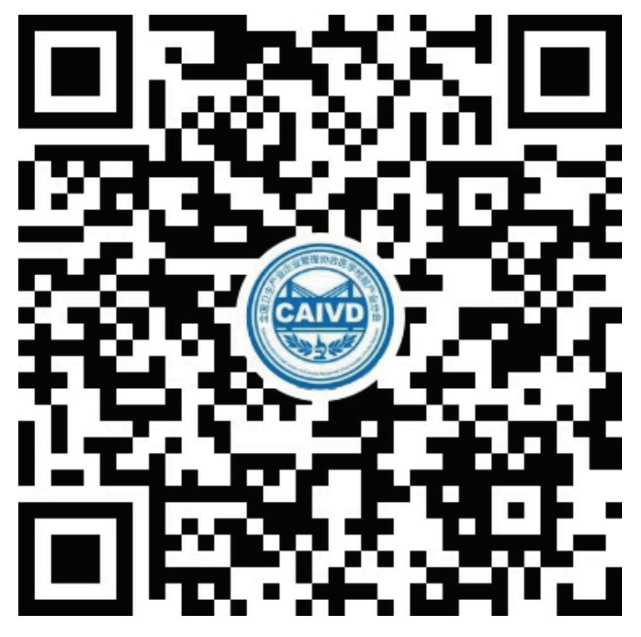
Bio-Rad Laboratories ddPCR Shows Accuracy Benefits in COVID-19 Detection Studies
2020/3/31 13:50:34 Viewsㄩ1263
NEW YORK 每 Bio-Rad Laboratories has developed an assay to detect the SARS-CoV-2 virus, cause of the COVID-19 pandemic, using its droplet digital PCR systems, and similar ddPCR tests have been shown in recent preliminary studies to reduce false negative results.
Digital PCR does not require calibration against standards the way that traditional real-time RT-PCR tests do. And, because the PCR reaction is sequestered into tens of thousands of tiny droplets, there is less of an impact of PCR inhibitors in the sample, which increases test sensitivity. The latter could be critical in cases of low viral load, such as early or asymptomatic infection with SARS-CoV-2 virus.
Carolyn Reifsnyder, director of life science marketing at Bio-Rad's Digital Biology Center, said that ddPCR has particular advantages for complex sample types that contain inhibitors. "Because we are doing endpoint PCR, we don't have the problem of inhibition that qPCR does," she explained.
For reasons that are not yet clear, qPCR results for SARS-CoV-2 infections seem to vary from day to day for some patients. "Digital PCR gives you more confidence that you're not getting a false-negative," Reifsnyder said, which for COVID-19 could result in increased transmission and more cases.
Two small studies published this month in medRxiv by research groups in China suggested that digital PCR technologies had improved sensitivity and were able to pick up infections that gold standard RT-qPCR testing had missed.
The first study described the evaluation of a ddPCR test during the outbreak in Wuhan. The work was conducted by researchers affiliated with Center for Advanced Measurement Science at the National Institute of Metrology in Beijing, along with researchers at the Centers for Disease Prevention and Control of Wuhan and Beijing, and Chongqing University.
The researchers ran their test, which used the Bio-Rad QX200 system, on 103 suspected patients, 75 close contacts, and 16 patients that were supposed to be convalescent, and compared the ddPCR results to three different commercial RT-qPCR kits.
They found that ddPCR had a limit of detection of two copies per reaction, and an overall accuracy of approximately 96 percent.
For patients with fever suspected of having SARS-CoV-2, detection was improved from about 28 percent to 87 percent using ddPCR. For close contacts, the positivity rate decreased from 21 percent to 1 percent, and the group also determined that older convalescent patients in particular had higher viral loads for a longer time. The researchers concluded that the enhanced sensitivity of the ddPCR test could make it ideal for determining whether it was safe to release such patients from quarantine.
The second study, by researchers at Wuhan University, compared ddPCR and real-time RT-PCR on 57 patient throat swabs. The researchers used the same primers and probes in both test protocols, and found the limit of detection on the ddPCR test was more than 500 times lower than for the standard real-time RT-PCR, with an overall accuracy of approximately 94 percent. And, in this study, nine out of 14 convalescent patients that had two negative RT-qPCR test results actually had detectable levels of virus using the ddPCR assay.
Yu Chen, a senior author on the study and a virology researcher at Wuhan University, commented in an email that throat swabs 每 a commonly-used sample type 每 tend to have low viral loads, and because of this "significant numbers of false negative reports are inevitable," resulting in failure to achieve a timely diagnosis, early treatment, or to interrupt the chain of transmission.
The highest reportable detection range of ddPCR is 5 x 104 copies per reaction, Chen said, which is lower than the 5 ℅ 106 copies per reaction typical for RT-PCR tests. "The viral load in patient samples is not very high," Chen added.
Although the cost of ddPCR is slightly higher than that of RT-PCR when used on a small scale, "If used on a large scale, the cost will be almost the same," Chen said. And, considering that the ddPCR testing is more accurate, the test may not need to be repeated on the same patient, as RT-PCR testing sometimes needs to be, in which case ddPCR may actually be less expensive than RT-PCR, Chen said.
Given the current constraints on instrument and kit availability, "We suggest that ddPCR could be used to complement to the current standard RT-PCR # a negative [RT-PCR] report could be tested again by ddPCR, because the positive report of RT-PCR is reliable," Chen said.
Finally, Chen commented that, in the current COVID-19 crisis, "All the methods for diagnosis of SARS-CoV-2 〞such RT-PCR, ddPCR, IgM/IgG [antibody testing], and chest CT 〞 will be helpful, and should be used in a complementary way, based on the actual situation."
Bio-Rad's COVID-19 strategies
According to Reifsnyder, Bio-Rad has been pursuing a probe-based triplex assay that detects two genes on the SARS-CoV-2 N gene and Rpp30, which is a marker for the human RNase P gene and used as a sample loading control.
The N gene targets align with the N1 and N2 targets in the EUA test from the US Centers for Disease Control and Prevention, she said, and Bio-Rad's test, named the 2019-nCoV CDC ddPCR Assay, is currently available for research use.
The assay uses nasopharyngeal swabs and single well plates, so 96 patient samples could potentially be run simultaneously.
"There is no standard curve like qPCR, so you're not wasting wells," Reifsnyder said. The run time is about five and half hours.
Bio-Rad has partnered with Biodesix to develop a ddPCR test and seek Emergency Use Authorization from the US Food and Drug Administration for a CLIA-lab based testing service.
In addtion, "We are doing our own studies to file for an EUA as a test manufacturer," Reifsnyder said.
The firm is still in conversations with different regulatory bodies around the world regarding registering the product in other locations, she said. "The regulatory landscape is changing really quickly," she said, noting that in parts of Europe and Asia now some labs can run research-use tests on patient samples under evolving guidelines.
The Bio-Rad ddPCR test can run on the firm's QX200 as well as a clinical instrument, the QXDx, that was cleared by the FDA along with an oncology assay last year.
Bio-Rad had previously described growing the menu of clinical tests for the QXDx, particularly in oncology and non-invasive prenatal testing, through internal development and collaborations. The company has also noted Asia has been an active area for the adoption of digital PCR into in vitro diagnostics.
"The QX200 and the QXDx are fundamentally the same instrument," Reifsnyder explained. The QXDx has been adapted for clinical use in the US while the QX200 is CE-IVD marked, but, "The good thing is, with the relaxing of regulatory requirements around the world, labs are now also able to test [for SARS-CoV-2] on a research-use instrument" during the COVID-19 crisis, she added.
Among digital PCR system makers, Stilla Technologies last month donated two of its Naica digital PCR systems to researchers in China to help officials there detect SARS-CoV-2 and monitor mutations in the coronavirus. The firm also describes on its website an RUO test kit developed by ApexBio, a partner in China, that can be used on its Naica system.
In addition to clinical testing, Bio-Rad also offers a number of other products to support COVID-19 research and diagnostics development.
For example, for diagnostics developers, the firm offers a one-step RT-qPCR supermix that is optimized for amplification of targets directly from RNA. It also provides a SARS-CoV-2 standard that contains synthetic RNA transcripts of five SARS-CoV-2 gene targets and human genomic DNA, as well as a SARS-CoV-2 negative standard that contains genomic DNA in a synthetic matrix.
This material was developed by Exact Diagnostics, a company Bio-Rad acquired last year. "We are using those as part of our EUA, and we're recommending those to labs around the world who just need a reference material," Reifsnyder said.
Bio-Rad also offers a number of research-use-only instruments, like the CFX real-time PCR and qPCR detection systems, as well as a CE-IVD marked system called the CFX96 Dx. These systems can in turn be automated to increase throughput using the firm's robotic plate handler called the CFX Automation System II.
And, Bio-Rad makes tools for coronavirus immunoassay research as well, such as multiplex immunoassay panels which was recently used in Wuhan to characterize infection 每 including the effect of coronavirus on the production of cytokines and chemokines 每 as recently reported in The Lancet.
Bio-Rad is investigating if it will commercialize a SARS-CoV-2 RT-qPCR test, Reifsnyder said, and it has also partnered globally with a number of groups for COVID-19 test development and research.
For example, Assurance Scientific Laboratories in Birmingham, Alabama is testing patient samples for COVID-19 under an EUA using Bio-Rad's CFX384 Touch Real-Time PCR Detection System. And the Singapore Agency for Science, Technology, and Research, or A*STAR's Fortitude Kit 2.0 SARS-CoV-2 test was validated using Bio-Rad's CFX96 Dx and CFX96 Touch Real-Time PCR Detection Systems and is in use by public and private hospitals in Singapore.
Now, "We are working around the clock to supply qPCR products to places around the world, including companies and government health labs," Reifsnyder said, including instruments.
Bio-Rad does not disclose placement numbers for its systems, but she said that the firm has to date placed thousands of the QX200, and the QXDx is also ramping in the US. And the firm is continuing to place and install instruments during the current COVID-19 crisis. Although much of the nation is currently under quarantine, "Companies that are impacting healthcare are able to still run," Reifsnyder explained.
"Our manufacturing sites are still up and running # and our production lines for the QX200 and CFX are still running at full capacity, making as many instruments as we can around the clock."
The firm is working closely with its oligo manufacturer to ensure its supply, and it began de-risking its supply chain of reagents and raw materials a few months ago, balancing risk though some manufacturing redundancies around the world, Reifsnyder said. Bio-Rad is also looking into RNA extraction workarounds to overcome the short supply of extraction kits currently facing labs, such as potentially using crude lysates of patient sample.
Reifsnyder said Bio-Rad has also gotten requests from researchers who want a digital PCR test to differentiate SARS-CoV-2 L and S strains.
"That is a subtle mutation, a very small change, and screening large populations to figure out what strains are where using sequencing would be a mess," she said. "We think digital PCR is going to have a purpose much longer term as well, as a research tool to better understand these respiratory viruses," she added.

- CAIVD WeChat
Subscription Account

- CAIVD WeChat
Channels
China Association of In-vitro Diagnostics
Part of the information in our website is from the internet.
If by any chance it violates your rights, please contact us.

